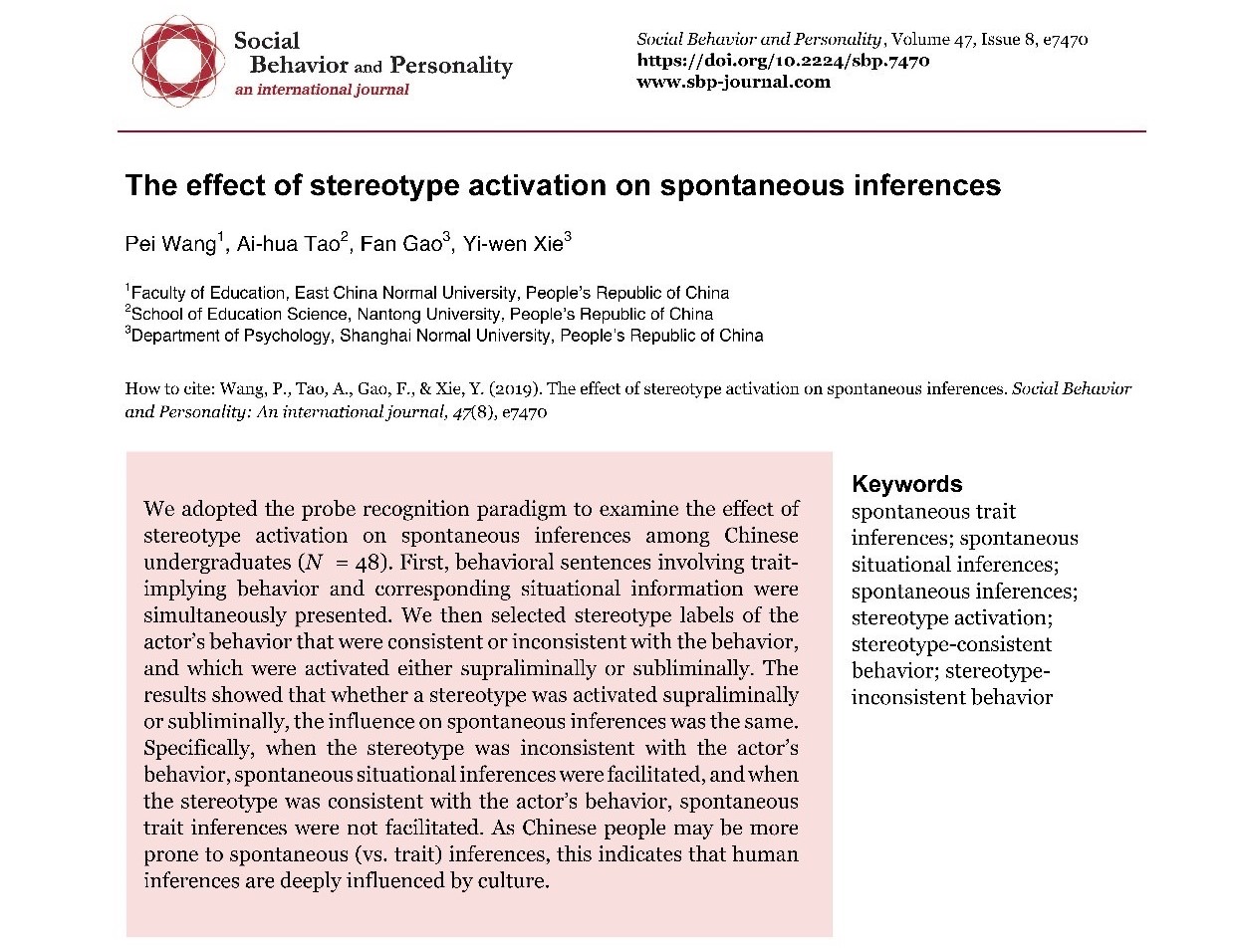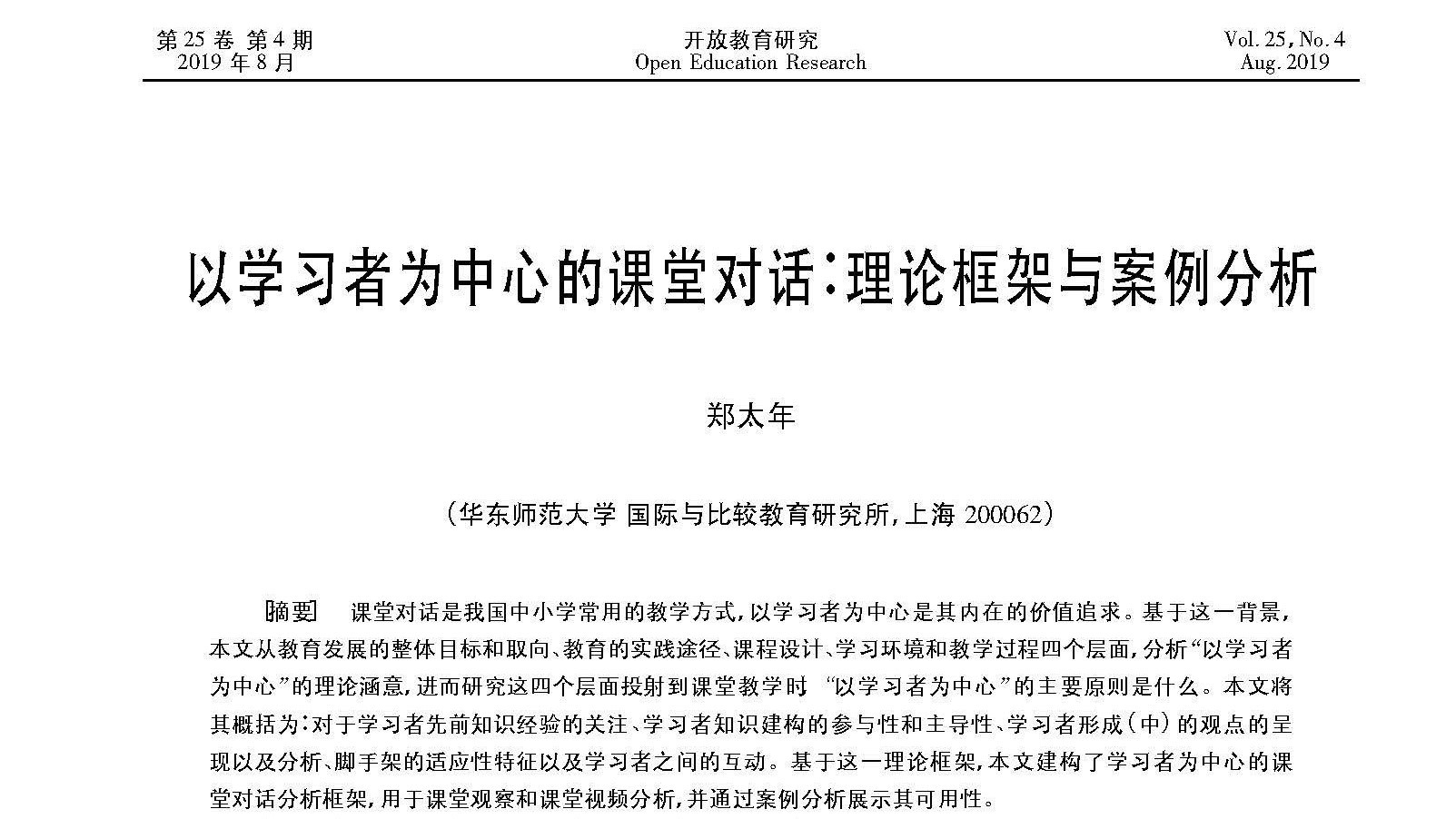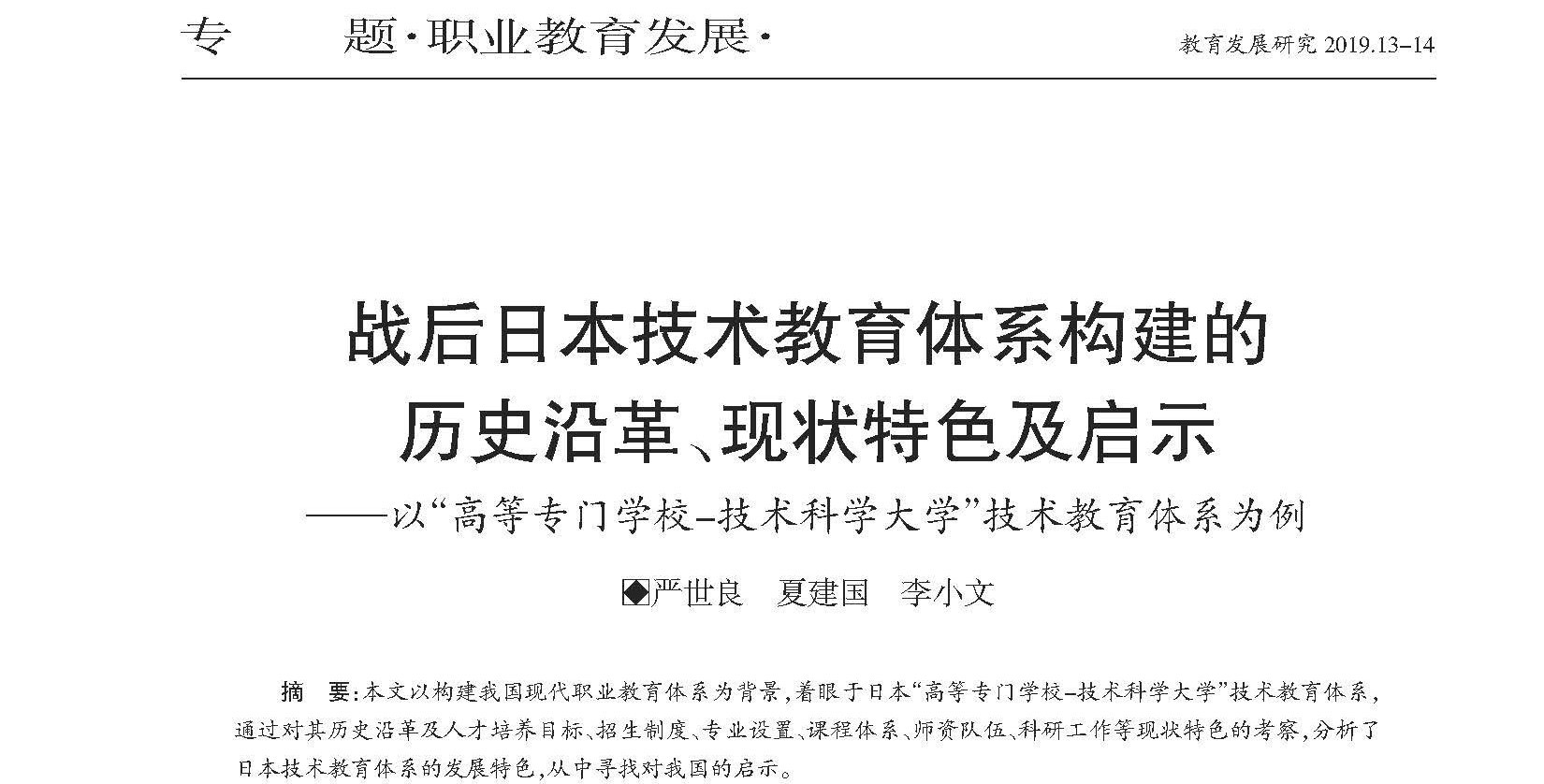

We adopted the probe recognition paradigm to examine the effect of stereotype activation on spontaneous inferences among Chinese undergraduates (N = 48). First, behavioral sentences involving trait-implying behavior and corresponding situational information were simultaneously presented. We then selected stereotype labels of the actor’s behavior that were consistent or inconsistent with the behavior, and which were activated either supraliminally or subliminally. The results showed that whether a stereotype was activated supraliminally or subliminally, the influence on spontaneous inferences was the same. Specifically, when the stereotype was inconsistent with the actor’s behavior, spontaneous situational inferences were facilitated, and when the stereotype was consistent with the actor’s behavior, spontaneous trait inferences were not facilitated. As Chinese people may be more prone to spontaneous (vs. trait) inferences, this indicates that human inferences are deeply influenced by culture.

点击查看:王沛 等《The effect of stereotype activation on spontaneous inferences》
课堂对话是我国中小学常用的教学方式,以学习者为中心是其内在的价值追求。基于这一背景,本文从教育发展的整体目标和取向、教育的实践途径、课程设计、学习环境和教学过程四个层面,分析”以学习者为中心”的理论涵意,进而研究这四个层面投射到课堂教学时,”以学习者为中心”的主要原则是什么。本文将其概括为:对于学习者先前知识经验的关注、学习者知识建构的参与性和主导性、学习者形成(中)的观点的呈现以及分析、脚手架的适应性特征以及学习者之间的互动。基于这一理论框架,本文建构了学习者为中心的课堂对话分析框架,用于课堂观察和课堂视频分析,并通过案例分析展示其可用性。

点击查看:郑太年《以学习者为中心的课堂对话:理论框架与案例分析》
本文以构建我国现代职业教育体系为背景,着眼于日本”高等专门学校-技术科学大学”技术教育体系,通过对其历史沿革及人才培养目标、招生制度、专业设置、课程体系、师资队伍、科研工作等现状特色的考察,分析了日本技术教育体系的发展特色,从中寻找对我国的启示。

点击查看:严世良 等《战后日本技术教育体系构建的历史沿革、现状特色及启示——以“高等专门学校-技术科学大学”技术教育体系为例》